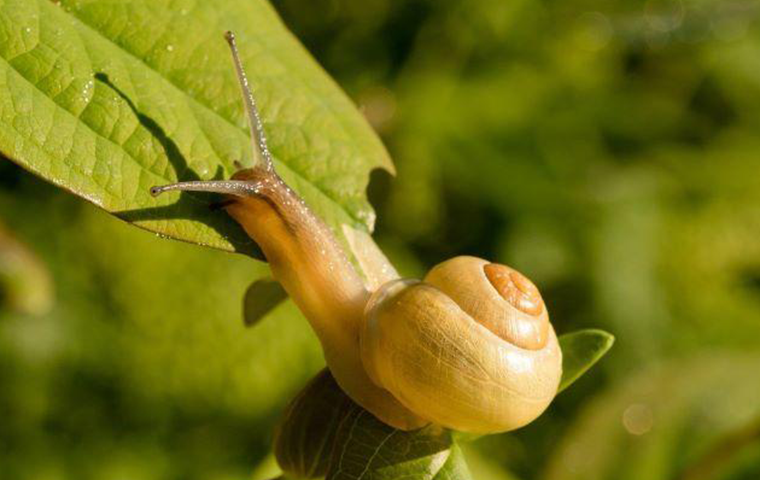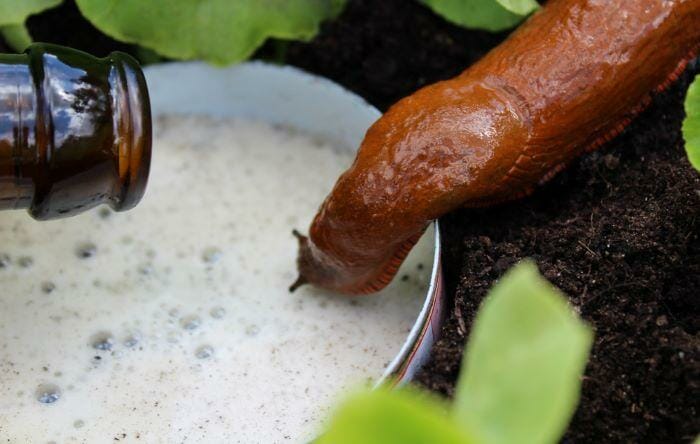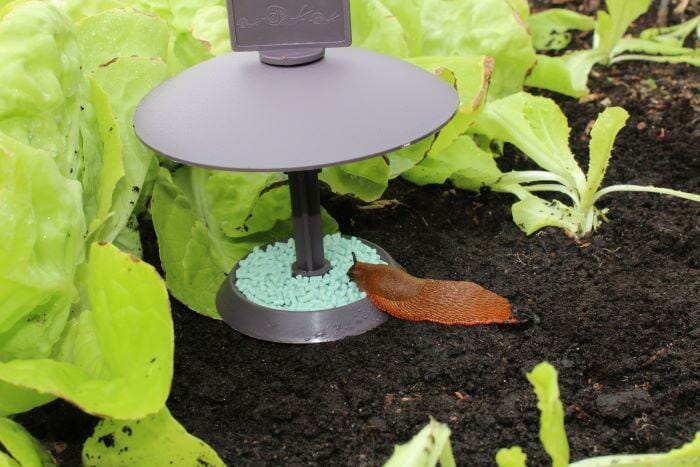While most of us understand that snails are part of the natural world, that doesn’t mean we want to share space with them. After all, snails are slimy, ugly, and destructive enough to harm your lawn and garden.
Fortunately, you don’t have to live with them forever.
Here at Smith’s Pest Management, our team helps get rid of snails and slugs on Bay Area properties each day.
As an experienced provider of pest management services, we understand how to help homeowners keep their properties clean, clear, and snail-free.
In this post, we’ll share our top tips to get rid of snails around your property and reclaim your outdoor space.
Key Takeaways
- Snails are tiny pests that significantly damage your lawn and garden. Snails eat living and decaying organic matter, including domestic herbs and vegetables like basil, beans, and cabbage.
- Get rid of snails in your flower beds or garden by using bait like beer, trapping the snails, using barriers and repellents, introducing natural predators, and planting snail-resistant flowers and herbs like hostas, rosemary, or sage. You can also kill snails with salt or create an artificial drought in your yard.
- Keep snails out of your yard by eliminating shelter, using drip irrigation, and planting borders of snail-resistant vegetation.
- Keep snails out of your house by sealing gaps and cracks in windows and doors or using baits.
What Attracts Snails to my House & Yard?

If you have a snail problem, the first step is to figure out what caused it. Like any pest, snails are probably seeking two things when they appear on your property: food and shelter.
Because of their slimy, moist bodies, snails thrive in environments that shelter them from the heat of the sun. They’re active on foggy, overcast, or rainy days, and will feed on a variety of plants in the yard or garden.
What do Snails Eat?
Snails eat organic matter, including a wide variety of living plants and decaying wood, crops, and plant leaves. Snails will also eat crops and flowers, and are particularly fond of the following:
- Basil
- Beans
- Cabbage
- Dahlia
- Delphinium
- Hosta
- Lettuce
- Marigolds
- Various vegetables
The brown garden snail (the most common snail to invade homes and gardens in California) will also eat succulents, turfgrass, and herbs.
What Damage Can Snails Cause?
For a small creature, snails can pack a big punch. Snails have a rough, rasp-like tongue, which they scrape across the edges of plant leaves. The result is large holes and chips across the surface area of the plant, which can damage or even kill your greenery.
But that’s not all they do.
Here are a few reasons to get rid of snails as soon as you see them:
- Snails reduce crop yield. If you have a flower or a vegetable garden on your property, snails will eat your plants and reduce your crop yield. They’re particularly hard on leafy vegetables.
- They can destroy water features. Snails and slugs are parasitic and can kill fish in decorative ponds and water features. Plus, these water-loving mollusks reproduce rapidly and can short your electronics and clog pond or pool filters and pipes.
- They spread disease. Snails carry diseases and parasitic worms (including Schistosomiasis that can be dangerous for domestic pets and people. Having them on your property may be putting your health at risk.
- They are unsightly. Nobody wants to pick a fresh leaf of lettuce from the garden only to find a snail. Snails are unsightly and disgusting and will make your yard or garden a less enjoyable place to be.
7 Ways to Get Rid of Snails in Your Garden

Getting rid of snails in flower beds can be tough. After all, the garden combines all the things snails love most: moisture, shelter, and food sources.
Fortunately, it is possible to get rid of slimy pest snails naturally and organically.
Here are a few tactics we recommend:
1. Use Bait
If you have a can of beer in your refrigerator, you’ve already got an effective form of snail bait. A time-tested home remedy, beer contains yeast, which attracts snails.
For best results, fill a shallow bowl or wide-mouthed jar about halfway with beer. Place it anywhere you’ve noticed snail activity, burying the bowl slightly in the dirt to make it easier for snails to access.
When the snails come out to feed, they’ll smell the beer, crawl in, and drown. You can then toss the dead snails out. Other substances like grape juice and store-bought iron phosphate will work equally well as bait.
Pros: Effective, affordable, non-toxic, safe for households with kids and pets
Cons: You’ll have to set bait again and again to reduce your snail population
Note: Dry baits like methiocarb and metaldehyde are also available, but are not safe for kids or pets, and can kill domestic animals and wildlife.
2. Use Traps
“How do I stop snails eating my plants?”
If you’re asking this, traps could be a great option. If you have snails in your lawn or garden and would prefer not to use bait, traps are a safe alternative. You can use an inexpensive homemade trap (like inverted grapefruit halves or melon or orange rinds scattered throughout your garden) or store-bought snail traps.
Regardless of which method you choose, traps work by emitting a scent that attracts snails, and then trapping and killing them when they arrive.
Pros: Inexpensive, easy to set, effective, a good fit for households who want to avoid poison or store-bought bait
Cons: Requires you to dispose of the trap and dead snails, traps need to be reset regularly, and may take weeks or months to fully kill a snail population.
3. Use Barriers and Repellents
Barriers and repellents can be an effective method for getting rid of snails without killing them. Here are a few options for each:
- Copper. Copper is an ideal barrier material for snails since the metal creates electric shocks that make it difficult for snails to navigate. Simply place a strip of copper around your garden or any other place you’d like to keep snails away from. It can also be effective to sprinkle copper fragments around these areas.
- Diatomaceous earth. Diatomaceous earth (DE) is a non-toxic material that is an excellent barrier or repellent for pests. The substance, which is made from fossilized diatoms, has rough edges that are difficult for snails to crawl over. While it will not kill them, it will slow them down.
- Coarse substances. Coarse substances like ground-up eggshells, sandpaper, and lava rock will provide an effective barrier for snails. You can also get rid of snails with coffee grounds. Research has found that a 1-2% caffeine solution will kill snails, while coffee grounds will simply form a barrier snails do not like to cross.
Pros: Barriers and repellents are effective, affordable, and easy to deploy
Cons: You need to re-apply barriers, especially homemade barriers like DE, eggshells, and coffee grounds, regularly for them to be effective
4. Introduce Predators
Chicken, geese, and ducks are natural predators of snails and slugs, as are turkeys, frogs, beetles, nematodes, and birds. Introducing any of these animals into your yard is an effective way to control snail populations without using poisons and traps.
Pros: Effective, eco-friendly, safe for a household with kids and pets
Cons: Requires the introduction of another animal, may be difficult to manage in some households
5. Plant Snail-Resistant Plants
Some plants are less attractive to snails than others. The following varieties resist snails, slugs, and other gastropods:
- Hostas
- Lavender
- Rosemary
- Sage
- Poppy
- Geranium
- Fuchsia
- Nasturtium
- Lantana
- And other aromatics
These plants are beautiful and can be an effective barrier to keep snails out of your garden.
Pros: Affordable, non-toxic, eco-friendly, safe for households with kids and pets
Cons: Does not kill snails, is most effective when used in conjunction with other methods
6. Kill Snails With Salt, Chemicals, or Pesticides
If you want to kill snails, you can do so with salt. Salt, for example, absorbs water from mollusks, which dehydrates and kills them. Sprinkle the salt directly onto the snails or use a thick layer of it to create a barrier. Be aware, though, that salt can harm plants and other animals.
Garlic, iron phosphate, bleach, and store-bought snail control solutions will also kill snails.
Pros: Effective, affordable
Cons: Most effective when used in conjunction with other solutions
7. Adjust Your Watering Schedule
One excellent way to get rid of snails is to simply change the way you water your garden. Instead of watering it in the evening, start watering your plants in the morning. As long as your plants are still getting adequate water, the change in schedule should not affect their health. Watering in the evening will make your garden drier at night, which will make it less attractive for snails who come out to feed in the dark.
Pros: Effective, easy to do, affordable
Cons: Most effective when used in conjunction with other methods
How to Get Rid of Snails in the House
Snails in your garden are one thing – snails in your house, though, are entirely another. Nobody wants to spot a snail on a wall or floorboard or – worse yet – step on one in the middle of the night.
Here are a few ways to get rid of snails in the house:
1. Seal all Gaps
The first step to stopping snails is identifying their access points. Use a flashlight to spot dried slime trails and trace them back to entry points. Seal all gaps around windows, doors, and foundations, and replace weather stripping on doors. Use caulk or silicone sealant for small cracks and expanding foam for larger cracks.
Pros: Effective, affordable, safe for kids and pets
Cons: Does not get rid of snails already in your home
2. Use Bait
For best results, fill a shallow bowl with beer and place it anywhere you’ve noticed snail activity, such as underneath a refrigerator or behind potted plants. If you have kids or pets, make sure to place the bait someplace they can’t reach or spill it. Check the bait trap frequently, and refresh with fresh bait if needed.
Pros: Effective, affordable, non-toxic, safe for households with kids and pets
Cons: You’ll have to set bait again and again to reduce your snail population
How do Pest Control Specialists Get Rid of Snails?

Getting rid of snails typically requires a multi-faceted approach. When you work with Smith’s Pest Management, here’s the method our team will use to get rid of snails:
1. Inspection
To completely resolve your snail infestation, we start with a comprehensive inspection. We’ll look for access points where the snails are entering your home, food sources they may be feasting on, and any other problem areas that need attention.
This crucial step allows us to identify the species and type of snail, while also getting a sense of how extensive the snail infestation is.
2. Treatment
Based on the information we gather during our inspection, we’ll develop a targeted treatment plan for your home. We’ll utilize a variety of methods and control measures to get rid of snails, including:
- Baiting
- Trapping
- Monitoring
- Exclusion and barrier tactics
3. Follow-Up
To make sure we’ve completely resolved your snail infestation, we provide regular follow-up appointments. We’ll check our treatment methods to make sure they’re still working, and make any adjustments needed.
How to Keep Snails Away

Here are a few ways to keep the slimy invaders away from your home and garden:
- Eliminate hideouts. Dealing with snails starts with identifying and eliminating their hideouts. Cut back tall weeds and grasses, remove loose organic debris from your garden and property, and pick up tarps, boards, and anything else that could create a dark, moist hiding place for snails.
- Use drip irrigation. Drip irrigation reduces humidity and minimizes moist surface areas, thereby making your space less attractive for snails.
- Plant snail-resistant vegetation. Snails tend to stay away from aromatic plants, ornamental woody plants, and ornamental grasses. They also dislike Poppy, Hydrangea, Lantana, and California Poppy.
While these tactics won’t get rid of the snails they already have, they’re effective ways to reduce future snail predation and damage to your property.
Are Snails or Slugs Taking Over Your San Francisco Bay Area Garden? We’re Here to Help!
Here at Smith’s Pest Management, we help residential and commercial properties in Northern California from Marin to Monterey get rid of snails on their property.
Contact us today to schedule your pest removal appointment and finally get rid of the snails on your property once and for all.






